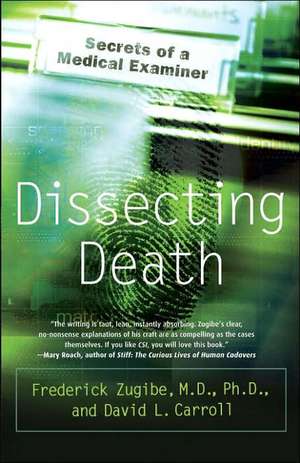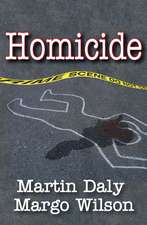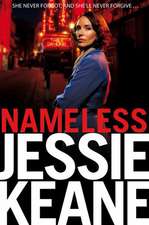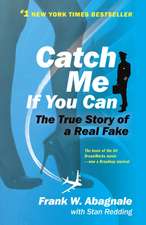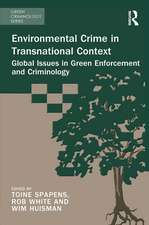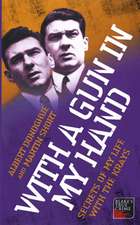Dissecting Death: Secrets of a Medical Examiner
Autor Frederick Zugibe, David L. Carrollen Limba Engleză Paperback – 30 iun 2006
As chief medical examiner of Rockland County, New York, for almost thirty-five years, Dr. Frederick Zugibe literally wrote the book on the subject—his widely used textbook is considered the definitive text. Over the years he has pioneered countless innovations, including the invention of a formula to soften mummified fingers—enabling fingerprinting, and thus identification, of a long-deceased victim. He has appeared as an expert hundreds of times in the media and in the courtroom—and not once has a jury failed to accept his testimony over opposing expert witnesses. And now, in Dissecting Death, he has opened the door to the world of forensic pathology in all its gruesome and fascinating mystery.
Dr. Zugibe takes us through the process all good pathologists follow, using eleven of his most challenging cases. With him, we visit the often grisly—though sometimes shockingly banal—crime scene. We inspect the body, palpate the wounds, search for clues in the hair and skin. We employ ultraviolet light, strange measuring devices, optical instruments. We see how a forensic pathologist determines the hour of death, the type of weapon used, the killer’s escape route. And then we enter the lab, the world of high-tech criminal detection: DNA testing, fingerprinting, gunshot patterns, dental patterns, X-rays.
But not every case ends in a conviction, and in a closing chapter Dr. Zugibe examines some recent high-profile cases in which blunders led to killers going free, either because the wrong party was brought to trial or because the evidence presented didn’t do the trick—including Jon-Benet Ramsey’s murder and, of course, the O.J. Simpson trial.
Preț: 99.94 lei
Nou
Puncte Express: 150
Preț estimativ în valută:
19.13€ • 19.94$ • 15.90£
19.13€ • 19.94$ • 15.90£
Carte disponibilă
Livrare economică 27 februarie-13 martie
Preluare comenzi: 021 569.72.76
Specificații
ISBN-13: 9780767918800
ISBN-10: 0767918800
Pagini: 240
Ilustrații: 8 PAGE PHOTO INSERT
Dimensiuni: 136 x 204 x 14 mm
Greutate: 0.2 kg
Editura: BROADWAY BOOKS
ISBN-10: 0767918800
Pagini: 240
Ilustrații: 8 PAGE PHOTO INSERT
Dimensiuni: 136 x 204 x 14 mm
Greutate: 0.2 kg
Editura: BROADWAY BOOKS
Notă biografică
FREDERICK ZUGIBE, M.D., Ph.D., is the former chief medical examiner of Rockland County and remains one of the nation’s most respected forensics experts. DAVID L. CARROLL has cowritten thirty-one books and produced twelve network television films. Both men live in Rockland County, New York.
Extras
CHAPTER
1
Of Ice Men and the Lure of Forensics
The great and constant need of those who investigate homicide and practice forensic pathology or criminal law is a warm humanism.
--RAMSEY CLARK, FORMER U.S. ATTORNEY GENERAL
Seeking truth to protect life.
--MOTTO OF THE ROCKLAND COUNTY MEDICAL EXAMINER'S OFFICE
CORPSE BY THE WALL
Nyack, new york, is a historic hudson river valley town famous for its antique stores and sensible restaurants. People frequently make the twenty-mile drive up from New York City to spend a lazy afternoon drifting in and out of the town's quaint shops, or walking Nyack's network of shore trails that fronts the mighty Palisades. The house of the painter Edward Hopper is now a museum and a major tourist attraction. The cottage where the writer Carson McCullers died is frequently visited.
Small Town, USA, but with a lot of polish. Not a neighborhood for gruesome frolics.
Yet on a warm September day in 1983, along the heavily forested Clausland Mountain Road a quarter mile out of town, Patrolman Edwin Gonzalez, a Palisades Park police officer on morning patrol, spies a woman's blouse crumpled up near an old stone wall along the south side of the road.
Patrolman Gonzalez gets out of his car to investigate.
As he walks toward the blouse he notices an even more suspicious-looking object, a stuffed, heavy-duty garbage bag, the type contractors use to dispose of construction materials. The bag was apparently dumped over the wall, then rolled down a slight incline before stopping between two rocks. It is wrapped with a great deal of tape and rope. It gives off a rank odor and displays bulges where arms and feet and heads might be.
The officer surveys the bag for several minutes, senses trouble, but knows how risky it can be, forensically speaking, to touch a suspicious piece of evidence. Since he is in the Orangetown district of Rockland County, he calls Lieutenant Youngman from the Orangetown Police to come over and investigate.
Lieutenant Youngman is quickly on the scene.
And he agrees, unwrapping the bag would be unsound procedure at this point. Nor is it necessary: circling the bundle, he notices a human foot jutting out from a hole in the bottom of the wrapping.
Lieutenant Youngman calls the Rockland County Medical Examiner's Office. Since I am the chief medical examiner for the County of Rockland, it is my duty to examine the body on site, then transport it to the morgue for autopsy. I drive directly to the scene of the crime.
The first sight that greets me as I approach the foul-smelling sack is a spotted garden snake slithering out from a hole in the bottom. Flies buzz around it crazily, and an army of carrion beetles marches in and out of small holes in the plastic, some carrying tiny packets of decomposed flesh.
Now as most people know from media hullabaloos such as the O. J. Simpson trial, when police and medical examiners arrive at a crime scene the first few minutes spent examining a corpse and collecting evidence can make or break a case. Certainly, this scene is no exception. This body must be handled gingerly, or important evidence will be contaminated.
Slowly, slowly is the watchword.
STRANGE WRAPPINGS
"Slowly," it turns out, is an understatement.
First, the County Sheriff's Bureau of Criminal Investigation (BCI) arrives and sets to work taking pictures of the bag and of the wooded area surrounding it. As they position themselves here and there, snapping the crime scene from various angles, I stand nearby and study the bag. There is, every official at the site agrees, something puzzling about the way it is packaged.
For starters, when a murdered body is dropped off, it is usually loosely trussed, unceremoniously stuffed into a cardboard box or barrel, then heaved into a deserted corner of the world such as a culvert or secluded woods.
This bag, however, has been handled with extraordinary care. There is even a whimsical quality to the wrapping, almost as if it were a gift package. The person who performed the wrapping obviously did so with a great deal of flair, and this fact already provides clues concerning the perpetrator's personality.
The murderer appears to be a careful, thorough person, who takes a kind of punctilious pride in his work--or perhaps her work; a person with deft hands and thus, perhaps, some manual or artistic skills; a person who knows, as a trained and alert professional killer might know, the importance of small details and the fact that one small, foolish mistake can tip your hand and lead to your arrest.
Since photos are still being taken of the crime scene, it is too soon to touch the evidence or remove the body. It is apparent, though, that inside this bag are more bags, like boxes in boxes. Perhaps a number of them.
Why so many? One bag is usually enough.
And another singular fact. Over the years I have looked into many open graves and closets and metal drums, where there lay corpses in every conceivable stage of decay. The body invariably emits exactly the same noxious stench. Just as cedar wood always smells the same and cow dung always smells the same, so a dead body unfailingly puts forth the same recognizable odor.
But though the stench emanating from this bag is offensive, it is different from the smell of any decomposing body I have ever encountered. Actually, I have never smelled anything quite like it in my entire career.
All very puzzling.
MORE STRANGE WRAPPINGS
The bundle is carefully lifted and driven back to the medical examiner's office, where we lay it out on the table and take X rays.
The pictures confirm what we already know, that the bag contains a human body, entirely intact.
They also reveal metallic fragments inside the skull.
We now begin the slow, tedious process of unwrapping. Indeed, there are a number of bags inside the main bag--a staggering twenty of them, one inside the other. The inner bags appear older than the outer bags, and each sack has been secured with two-inch-wide plastic tape, then tied with small segments of clothesline. Beetles and other insects emerge from the packing as the plastic is unfolded. I see also that one arm on the corpse is taped tightly to the chest; the other has come loose, probably during the bagging and wrapping. The corpse's hands have been exposed to the elements or to some type of harsh environment, and both are dried and hardened--"mummified," in forensic language.
Finally, the last bag is removed, revealing the body of a heavyset Caucasian male. He is wearing a short-sleeved button-down shirt with "Royal Knight permanent press USA" on the label. Also Haggar slacks and argyle socks. In his right front pants pocket he has $15 and a few coins. We carefully launder all his clothing and meticulously describe each item: its color, size, style, and labels. In the event that someone comes forward in the future to identify the remains, these clothes can be compared with the clothing the missing man was reportedly wearing when last seen alive.
The victim in question appears to be middle-aged. Though his frame is shrunken, he probably stood around six feet tall when alive and weighed 200 pounds or more. While there are a number of forensic inconsistencies in his appearance, external observation suggests that he has been dead for three or four weeks.
He also has a single bullet hole in the back of his head.
THE ANATOMY OF AUTOPSY
Before I describe the autopsy that follows, some background information on autopsies in general is in order: how they provide us with useful information, the sequence of surgical and laboratory procedures we follow, and our pre-established goals. Autopsies have often played an important role, sometimes a central role, in helping me to understand and, we hope, solve a case. For people interested in forensic science and its sometimes esoteric methodologies, knowing a bit about the mechanics of body examination helps.
During an autopsy, of course, a medical examiner's first mission is to identify the corpse on the table. But while our multibagged cadaver does not reveal his secrets so easily, as you will see, eventually his identity becomes the central axis around which this entire bizarre homicide turns.
In general, I attempt to ID a corpse by recording a number of critical physical features that the victim's friends, family, and/or witnesses will recognize. These features include the victim's weight, height, build, sex, age, race, facial features, hair configuration and color, eye color, muscular development, skin color, clothing, jewelry, scars, tattoos, and physical malformations such as a clubfoot or a missing toe. When possible, fingerprints are also taken and matched with those in government and law enforcement fingerprint databases.
Minute inspection of certain body parts often reveals vital information. Weatherworn, craggy hands, for instance, may belong to a laborer, especially one who works outdoors. Pink, smooth hands are indicative of nonmanual professions, often desk jobs. Dirty, unkempt hands tell one story; manicured, meticulously clean ones quite another. A large callus on the first and second knuckles of one or both hands usually belongs to a person who trains in the martial arts, especially karate. Calluses on the fingertips of the left hand mean this person plays the guitar or other stringed instrument; if the calluses are thick, this person may be a professional musician.
If a body arrives in the morgue stripped of its flesh, I often call in specialists such as odontologists--forensic dentists--to examine and compare the victim's teeth against dental photographs listed in databases around the country. We may consult anthropologists adept at using skeletal remains to establish race, sex, age, size, body type, and so forth. When no other method of identification succeeds, forensic sculptors, studying what remains of the victim's cranial architecture, are called on to make clay reconstructions of the mystery person's head and face. Experts in computer-assisted design perform digital facial reconstructions.
The body is first examined while fully dressed.
The clothes are then carefully removed. This process is done by cutting or scissoring, or, better, by unbuttoning and unhooking.
These garments are then laid out near the cadaver so that the location of holes in them can be matched with wounds on the body, allowing examiners to find hidden assault marks and to determine the position of the body when the wounds were delivered. Each item of clothing is labeled, photographed, and marked. If a garment is covered with body fluids it is artificially dried to protect these stains from bacterial invasion and putrefaction.
In some cases forensic pathologists take fingernail clippings from a body and examine them under the microscope for so-called "tattletale" substances such as drugs, earth, and blood (of both victim and assailant), or for scrapings of the assailant's skin. In sex crimes sperm samples are sought in the genital-anal areas and in the mouth. Pubic hairs, both those of the victim and (we hope) the offender, are searched for and examined under the microscope. Any faded or trace markings on the body are inspected under ultraviolet and other forms of spectrographic light to increase their visibility.
The naked body is washed and the wounds are cleaned.
The corpse is then photographed, X-rayed, and fluoroscoped for hidden evidence such as embedded objects, broken blades, undetected stab wounds, and bullet fragments. We take close-ups of wounds and trauma marks. A written description is also made of all visible wounds and injuries, including their placement, shape, and measurement.
Once all this evidence is recorded and set aside for possible further examination, the process of dissection begins.
Each deceased person must, of course, be ministered to in a different surgical way, depending on the apparent type of death suffered, the location of the wounds, and the condition of the body. Each autopsy requires its own specific combination of forensic examination and surgical mechanics.
As a rule, forensic pathologists begin an autopsy at the head and work downward. First, they search the scalp for hidden wounds or artifacts; then they take hair samples. They examine the mouth for tooth damage, tongue lacerations, chemicals or toxic substances, and cuts on the lip and inner mouth. They look for and record any blood accumulations inside the nose and ears.
The inner eyelids are examined for petechiae--tiny blood specks that suggest asphyxiation.
When appropriate, an incision is made in the cranium and the brain is removed, weighed, and scrutinized for injuries. In some cases the cranium is also sawed at various angles to expose the sinuses, jawbone, or other parts of the skull that require scrutiny.
When the head has been thoroughly studied, an incision is made across the chest. The sternum is removed and internal examination begins. Are broken ribs showing? Is blood pooled in various cavities? Are any of the chest organs mangled or torn?
The heart and lungs are removed and weighed; thin slices are taken and preserved for possible future use. Blood is also taken, examined, and preserved, along with fluids from the lungs and pleural cavity.
The abdomen is opened next. Food contents in the stomach are inspected, and the spleen, kidneys, stomach, and intestines are removed, weighed, and given thorough study, especially if they are damaged or wounds are showing. Tissue samples are taken of the heart and other organs for microscopic examination.
The autopsy ends in the pelvic cavity. The external and internal anus and genitalia are inspected, urine samples taken, the bladder removed and studied, and, in cases of sexual assault, vaginal and anal swabs made.
When finished I then write or tape-record a full report describing the procedures and findings in detail. Included in the report is a brief history of the case; a scene description; a list of all persons present at the scene; an X-ray description of the body; descriptions of the clothing, of the naked body prior to dissection, of the condition of the organs at autopsy, and of the wounds; the toxicological findings; and the cause and manner of death.
This report serves investigators as a reference and a thumbnail portrait of the victim's total internal and external physical condition at the time of death.
THE UNKNOWN MAN IN THE PLASTIC BAGS
The first thing that becomes apparent when we begin the autopsy of the man in the many bags is that, although his body is markedly disintegrated, his body tissue is not distended or swollen.
This puzzles me and everyone else on the examination team. A few hours after a person dies, bacteria invariably invade cellular tissue, producing a variety of gases. These gases act something like an inflating pump, causing the face to puff up and the arms, legs, and testicles to swell, sometimes giving the body a balloonlike, Michelin Man appearance. In this instance there are no signs of bloating anywhere.
The surface of the body has a greasy texture that I have rarely seen on a dead person before, and the skin color is an atypical putty beige. Sometimes a drowned body will take on a pasty consistency and color of this kind. But this body shows no signs of drowning.
From the Hardcover edition.
1
Of Ice Men and the Lure of Forensics
The great and constant need of those who investigate homicide and practice forensic pathology or criminal law is a warm humanism.
--RAMSEY CLARK, FORMER U.S. ATTORNEY GENERAL
Seeking truth to protect life.
--MOTTO OF THE ROCKLAND COUNTY MEDICAL EXAMINER'S OFFICE
CORPSE BY THE WALL
Nyack, new york, is a historic hudson river valley town famous for its antique stores and sensible restaurants. People frequently make the twenty-mile drive up from New York City to spend a lazy afternoon drifting in and out of the town's quaint shops, or walking Nyack's network of shore trails that fronts the mighty Palisades. The house of the painter Edward Hopper is now a museum and a major tourist attraction. The cottage where the writer Carson McCullers died is frequently visited.
Small Town, USA, but with a lot of polish. Not a neighborhood for gruesome frolics.
Yet on a warm September day in 1983, along the heavily forested Clausland Mountain Road a quarter mile out of town, Patrolman Edwin Gonzalez, a Palisades Park police officer on morning patrol, spies a woman's blouse crumpled up near an old stone wall along the south side of the road.
Patrolman Gonzalez gets out of his car to investigate.
As he walks toward the blouse he notices an even more suspicious-looking object, a stuffed, heavy-duty garbage bag, the type contractors use to dispose of construction materials. The bag was apparently dumped over the wall, then rolled down a slight incline before stopping between two rocks. It is wrapped with a great deal of tape and rope. It gives off a rank odor and displays bulges where arms and feet and heads might be.
The officer surveys the bag for several minutes, senses trouble, but knows how risky it can be, forensically speaking, to touch a suspicious piece of evidence. Since he is in the Orangetown district of Rockland County, he calls Lieutenant Youngman from the Orangetown Police to come over and investigate.
Lieutenant Youngman is quickly on the scene.
And he agrees, unwrapping the bag would be unsound procedure at this point. Nor is it necessary: circling the bundle, he notices a human foot jutting out from a hole in the bottom of the wrapping.
Lieutenant Youngman calls the Rockland County Medical Examiner's Office. Since I am the chief medical examiner for the County of Rockland, it is my duty to examine the body on site, then transport it to the morgue for autopsy. I drive directly to the scene of the crime.
The first sight that greets me as I approach the foul-smelling sack is a spotted garden snake slithering out from a hole in the bottom. Flies buzz around it crazily, and an army of carrion beetles marches in and out of small holes in the plastic, some carrying tiny packets of decomposed flesh.
Now as most people know from media hullabaloos such as the O. J. Simpson trial, when police and medical examiners arrive at a crime scene the first few minutes spent examining a corpse and collecting evidence can make or break a case. Certainly, this scene is no exception. This body must be handled gingerly, or important evidence will be contaminated.
Slowly, slowly is the watchword.
STRANGE WRAPPINGS
"Slowly," it turns out, is an understatement.
First, the County Sheriff's Bureau of Criminal Investigation (BCI) arrives and sets to work taking pictures of the bag and of the wooded area surrounding it. As they position themselves here and there, snapping the crime scene from various angles, I stand nearby and study the bag. There is, every official at the site agrees, something puzzling about the way it is packaged.
For starters, when a murdered body is dropped off, it is usually loosely trussed, unceremoniously stuffed into a cardboard box or barrel, then heaved into a deserted corner of the world such as a culvert or secluded woods.
This bag, however, has been handled with extraordinary care. There is even a whimsical quality to the wrapping, almost as if it were a gift package. The person who performed the wrapping obviously did so with a great deal of flair, and this fact already provides clues concerning the perpetrator's personality.
The murderer appears to be a careful, thorough person, who takes a kind of punctilious pride in his work--or perhaps her work; a person with deft hands and thus, perhaps, some manual or artistic skills; a person who knows, as a trained and alert professional killer might know, the importance of small details and the fact that one small, foolish mistake can tip your hand and lead to your arrest.
Since photos are still being taken of the crime scene, it is too soon to touch the evidence or remove the body. It is apparent, though, that inside this bag are more bags, like boxes in boxes. Perhaps a number of them.
Why so many? One bag is usually enough.
And another singular fact. Over the years I have looked into many open graves and closets and metal drums, where there lay corpses in every conceivable stage of decay. The body invariably emits exactly the same noxious stench. Just as cedar wood always smells the same and cow dung always smells the same, so a dead body unfailingly puts forth the same recognizable odor.
But though the stench emanating from this bag is offensive, it is different from the smell of any decomposing body I have ever encountered. Actually, I have never smelled anything quite like it in my entire career.
All very puzzling.
MORE STRANGE WRAPPINGS
The bundle is carefully lifted and driven back to the medical examiner's office, where we lay it out on the table and take X rays.
The pictures confirm what we already know, that the bag contains a human body, entirely intact.
They also reveal metallic fragments inside the skull.
We now begin the slow, tedious process of unwrapping. Indeed, there are a number of bags inside the main bag--a staggering twenty of them, one inside the other. The inner bags appear older than the outer bags, and each sack has been secured with two-inch-wide plastic tape, then tied with small segments of clothesline. Beetles and other insects emerge from the packing as the plastic is unfolded. I see also that one arm on the corpse is taped tightly to the chest; the other has come loose, probably during the bagging and wrapping. The corpse's hands have been exposed to the elements or to some type of harsh environment, and both are dried and hardened--"mummified," in forensic language.
Finally, the last bag is removed, revealing the body of a heavyset Caucasian male. He is wearing a short-sleeved button-down shirt with "Royal Knight permanent press USA" on the label. Also Haggar slacks and argyle socks. In his right front pants pocket he has $15 and a few coins. We carefully launder all his clothing and meticulously describe each item: its color, size, style, and labels. In the event that someone comes forward in the future to identify the remains, these clothes can be compared with the clothing the missing man was reportedly wearing when last seen alive.
The victim in question appears to be middle-aged. Though his frame is shrunken, he probably stood around six feet tall when alive and weighed 200 pounds or more. While there are a number of forensic inconsistencies in his appearance, external observation suggests that he has been dead for three or four weeks.
He also has a single bullet hole in the back of his head.
THE ANATOMY OF AUTOPSY
Before I describe the autopsy that follows, some background information on autopsies in general is in order: how they provide us with useful information, the sequence of surgical and laboratory procedures we follow, and our pre-established goals. Autopsies have often played an important role, sometimes a central role, in helping me to understand and, we hope, solve a case. For people interested in forensic science and its sometimes esoteric methodologies, knowing a bit about the mechanics of body examination helps.
During an autopsy, of course, a medical examiner's first mission is to identify the corpse on the table. But while our multibagged cadaver does not reveal his secrets so easily, as you will see, eventually his identity becomes the central axis around which this entire bizarre homicide turns.
In general, I attempt to ID a corpse by recording a number of critical physical features that the victim's friends, family, and/or witnesses will recognize. These features include the victim's weight, height, build, sex, age, race, facial features, hair configuration and color, eye color, muscular development, skin color, clothing, jewelry, scars, tattoos, and physical malformations such as a clubfoot or a missing toe. When possible, fingerprints are also taken and matched with those in government and law enforcement fingerprint databases.
Minute inspection of certain body parts often reveals vital information. Weatherworn, craggy hands, for instance, may belong to a laborer, especially one who works outdoors. Pink, smooth hands are indicative of nonmanual professions, often desk jobs. Dirty, unkempt hands tell one story; manicured, meticulously clean ones quite another. A large callus on the first and second knuckles of one or both hands usually belongs to a person who trains in the martial arts, especially karate. Calluses on the fingertips of the left hand mean this person plays the guitar or other stringed instrument; if the calluses are thick, this person may be a professional musician.
If a body arrives in the morgue stripped of its flesh, I often call in specialists such as odontologists--forensic dentists--to examine and compare the victim's teeth against dental photographs listed in databases around the country. We may consult anthropologists adept at using skeletal remains to establish race, sex, age, size, body type, and so forth. When no other method of identification succeeds, forensic sculptors, studying what remains of the victim's cranial architecture, are called on to make clay reconstructions of the mystery person's head and face. Experts in computer-assisted design perform digital facial reconstructions.
The body is first examined while fully dressed.
The clothes are then carefully removed. This process is done by cutting or scissoring, or, better, by unbuttoning and unhooking.
These garments are then laid out near the cadaver so that the location of holes in them can be matched with wounds on the body, allowing examiners to find hidden assault marks and to determine the position of the body when the wounds were delivered. Each item of clothing is labeled, photographed, and marked. If a garment is covered with body fluids it is artificially dried to protect these stains from bacterial invasion and putrefaction.
In some cases forensic pathologists take fingernail clippings from a body and examine them under the microscope for so-called "tattletale" substances such as drugs, earth, and blood (of both victim and assailant), or for scrapings of the assailant's skin. In sex crimes sperm samples are sought in the genital-anal areas and in the mouth. Pubic hairs, both those of the victim and (we hope) the offender, are searched for and examined under the microscope. Any faded or trace markings on the body are inspected under ultraviolet and other forms of spectrographic light to increase their visibility.
The naked body is washed and the wounds are cleaned.
The corpse is then photographed, X-rayed, and fluoroscoped for hidden evidence such as embedded objects, broken blades, undetected stab wounds, and bullet fragments. We take close-ups of wounds and trauma marks. A written description is also made of all visible wounds and injuries, including their placement, shape, and measurement.
Once all this evidence is recorded and set aside for possible further examination, the process of dissection begins.
Each deceased person must, of course, be ministered to in a different surgical way, depending on the apparent type of death suffered, the location of the wounds, and the condition of the body. Each autopsy requires its own specific combination of forensic examination and surgical mechanics.
As a rule, forensic pathologists begin an autopsy at the head and work downward. First, they search the scalp for hidden wounds or artifacts; then they take hair samples. They examine the mouth for tooth damage, tongue lacerations, chemicals or toxic substances, and cuts on the lip and inner mouth. They look for and record any blood accumulations inside the nose and ears.
The inner eyelids are examined for petechiae--tiny blood specks that suggest asphyxiation.
When appropriate, an incision is made in the cranium and the brain is removed, weighed, and scrutinized for injuries. In some cases the cranium is also sawed at various angles to expose the sinuses, jawbone, or other parts of the skull that require scrutiny.
When the head has been thoroughly studied, an incision is made across the chest. The sternum is removed and internal examination begins. Are broken ribs showing? Is blood pooled in various cavities? Are any of the chest organs mangled or torn?
The heart and lungs are removed and weighed; thin slices are taken and preserved for possible future use. Blood is also taken, examined, and preserved, along with fluids from the lungs and pleural cavity.
The abdomen is opened next. Food contents in the stomach are inspected, and the spleen, kidneys, stomach, and intestines are removed, weighed, and given thorough study, especially if they are damaged or wounds are showing. Tissue samples are taken of the heart and other organs for microscopic examination.
The autopsy ends in the pelvic cavity. The external and internal anus and genitalia are inspected, urine samples taken, the bladder removed and studied, and, in cases of sexual assault, vaginal and anal swabs made.
When finished I then write or tape-record a full report describing the procedures and findings in detail. Included in the report is a brief history of the case; a scene description; a list of all persons present at the scene; an X-ray description of the body; descriptions of the clothing, of the naked body prior to dissection, of the condition of the organs at autopsy, and of the wounds; the toxicological findings; and the cause and manner of death.
This report serves investigators as a reference and a thumbnail portrait of the victim's total internal and external physical condition at the time of death.
THE UNKNOWN MAN IN THE PLASTIC BAGS
The first thing that becomes apparent when we begin the autopsy of the man in the many bags is that, although his body is markedly disintegrated, his body tissue is not distended or swollen.
This puzzles me and everyone else on the examination team. A few hours after a person dies, bacteria invariably invade cellular tissue, producing a variety of gases. These gases act something like an inflating pump, causing the face to puff up and the arms, legs, and testicles to swell, sometimes giving the body a balloonlike, Michelin Man appearance. In this instance there are no signs of bloating anywhere.
The surface of the body has a greasy texture that I have rarely seen on a dead person before, and the skin color is an atypical putty beige. Sometimes a drowned body will take on a pasty consistency and color of this kind. But this body shows no signs of drowning.
From the Hardcover edition.
Recenzii
“Compelling reading for fans of insider accounts of forensics.” —Publishers Weekly
“This is the sort of book that makes you miss your bus stop. Ten of Dr. Zugibe’s most puzzling murder cases serve as gripping examples of the medical examiner’s gruesome magic.” —Mary Roach, author of Stiff: The Curious Lives of Human Cadavers
“This is the sort of book that makes you miss your bus stop. Ten of Dr. Zugibe’s most puzzling murder cases serve as gripping examples of the medical examiner’s gruesome magic.” —Mary Roach, author of Stiff: The Curious Lives of Human Cadavers
